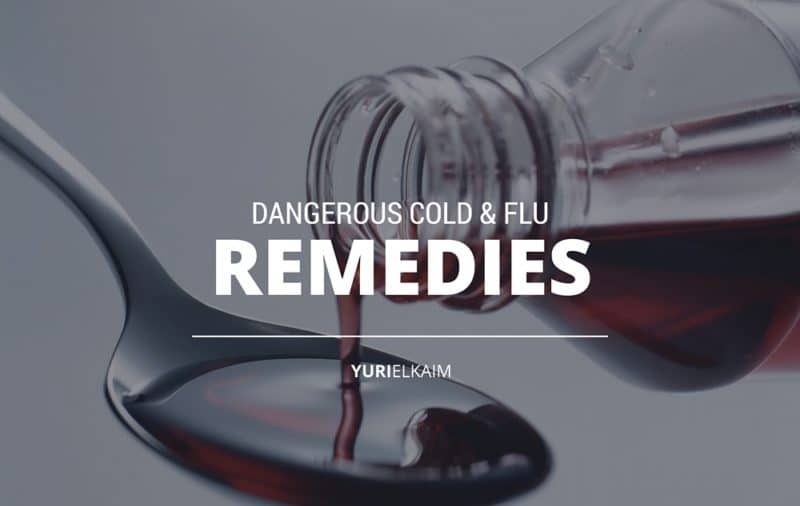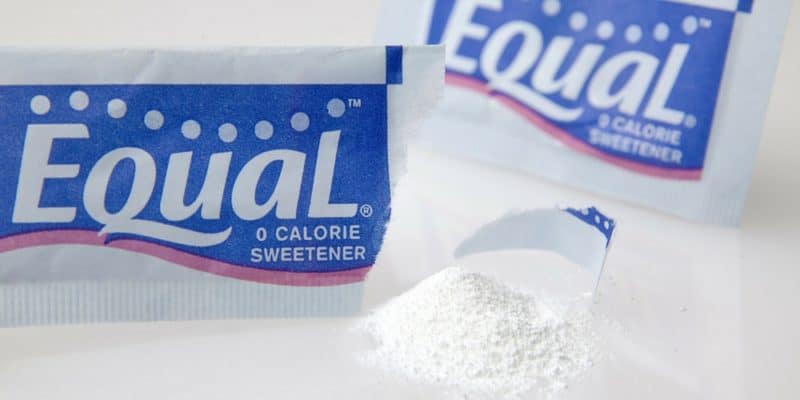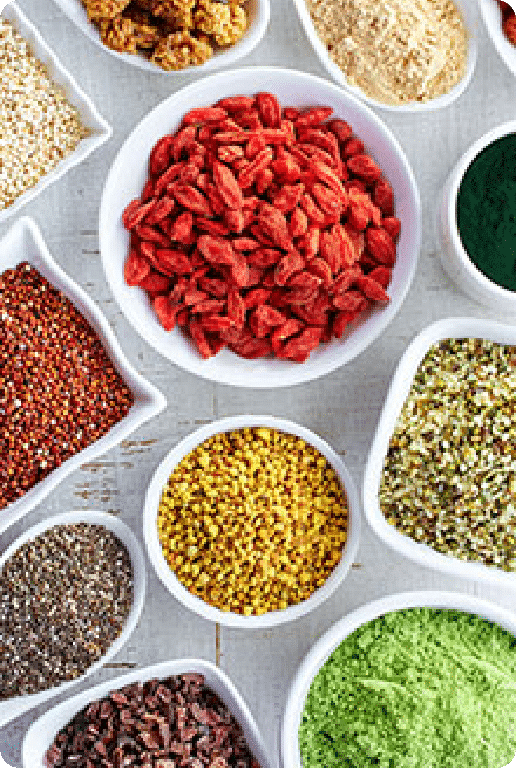The date was March 2, 2011, and the FDA has just recalled close to 500 prescription cold, cough and allergy medications because these “cold and flu remedies” (or should I say “drugs”) lacked FDA approval.
You can see the full list of recalled drugs here, but essentially, these drugs were not tested for safety, quality, and efficacy by the agency.
Fast forward to January 11, 2016. Nine retail chains, including CVS and Rite-Aid, recall children’s cold medicine due to overdose risks. It was found that an overdose of the medication may in fact cause hyper excitability, rapid eye movements, changes in muscle reflexes, ataxia, dystonia, hallucinations, stupor, and wait for it… coma.
Wow.
This is just a small sampling of the numerous recalls issued by the FDA and other health governing bodies over the years.
I don’t know about you, but when my kids have a cough, cold, or even the flu, there’s no way in hell I’m using any of the commercial drugs designed to supposedly “help” them.
The scary part is that, for the most part, almost all cold and flu remedies are readily available over the counter which presents ZERO barrier to using them. And unless you know what to watch for, you’re basically signing up to be a human guinea pig.
The reality is that most of these medications are more dangerous (and maybe even less effective) than natural remedies .
Strep Throat Savior
Even with 3 young boys bringing all sorts of who-knows-what into our home, I’m fairly immune to most of it. However, a little while ago I got hit with a bout of strep throat that sidelined me for a week. It wasn’t fun. I had a fever, sore throat… you know, the usual.
After about four days or so my mom sent me a text suggesting I get some antibiotics. Trust me, if I could have shouted at her, I would have.
You see, unless it’s a matter of life or death, I’ll never use antibiotics. I grew up on them, and because of this my gut has been compromised enough already.
So instead—and I’m not sure why it’s taken me as long as it has—I now rely on my good old pals cayenne pepper and apple cider vinegar, two well-known natural remedies for killing off strep throat.
I simply added them to my tea (in high doses) and gargled several times per day. The next morning? I was 99% better.
Every time I experience the amazing healing properties of natural cold and flu remedies such as these, it only makes me cringe even more to see people guzzling dangerous cold and flu medications. You don’t need them—and neither do your kids.
Disclaimer: You should obviously consult with your doctor first, but let’s face it: is a medical doctor really going to advise you to take cayenne pepper for a sore throat? I doubt it.
The Big 6: The Best Cold and Flu Remedies
As you can probably tell by now, I aim to remedy almost every ailment naturally. I’ll give you even more reason to do so a little later (with some shocking images I might add) but here’s a glimpse of some of the natural cold and flu remedies I use to prevent and treat many common ailments:
1. Apple Cider Vinegar Tea
- Warm water
- 1-2 tbsp apple cider vinegar
- Juice of 1/2 lemon
- 1 tsp of honey
- Add cayenne if you have a soar throat
2. Throat Soother Tea
- Warm water
- 1 tbsp ACV
- Juice of 1/2 lemon
- 1 tsp honey
- 1 inch cube ginger (grated and juice squeezed)
- Pinch of cayenne pepper.
3. Gargling with Warm Salt Water
- Pinch of cayenne pepper and ACV added. It’s spicy, but it’s an awesome antibacterial
4. Neti Pot
- Use warm salt water to clear out blocked sinuses
5. Vitamin D3
- Increasing vitamin D3 intake (close to 10,000 IU/day)
6. Fish Oil
2-3 tbsp fish oil daily
Of course, each of these cold and flu fighters are in addition to eating a healthy diet.
Feel free to hijack these remedies if you’re feeling a little under the weather. Every one can play an important role in supporting your immune system, lowering inflammation, and killing off bacterial and viral infections.
Okay, so here’s why I’m so adamant about treating your symptoms naturally…
The Shocking Ingredients Lurking in Your Cough, Cold, and Flu Medicine
A little while ago, I spent close to 30 minutes at Shoppers Drug Mart (our Canadian CVS) to find some suitable cold/flu/sore throat remedies.
To my dismay – and not surprisingly I should add – 99% of the options were atrocious. Why do I say this?
It’s because they were packed with either boat loads of acetaminophen—an ingredient found in medicines like Tylenol, which destroys your digestive tract—or the ingredients included unnecessary additives like aspartame and food dyes. No thank you.
Let’s have a look at some examples:
Buckley’s
I started with Buckley’s simply because I’d never tried it, but after looking at its ingredient list I almost lost my dinner. There’s 325mg of acetaminophen in just ONE teaspoon! That’s almost as much as is found in Tylenol extra strength.
Note: I should mention acetaminophen is only found in their “flu” formulations.
Buckley’s Product Information:
Notice the caution area highlighted above: “…contains enough drug to seriously harm a child”.
Obviously, I passed on Buckley’s.
Okay, so now let’s look at some throat lozenges available to us. Unfortunately, these were even worse.
Ricola
I chose Ricola because I’ve seen their commercials over the years. I figured they might be one of the better cold and flu remedies available. Unfortunately, that would be a cardinal sin because one of my guiding rules is this:
If it’s advertised on TV, avoid it like the plague.
Initially the ingredients looked promising; that is until they snuck in the aspartame and acesulfame-K. With those ingredients you might as well be drinking Coke Zero.
I’ll tell you more about the dangers of artificial sweeteners like aspartame in just a moment.
Cepacol
When I was younger, I took Cepacol… a LOT. Apparently, I dealt with many throat infections. I thank all the antibiotics for that.
Fortunately, it’s now been more than a decade since I last used Cepacol, and this ingredient list will show you why I’m happy those days are long behind me. Take a look at the bottom of its Drug Facts sheet where a plethora of toxic ingredients are listed:
Let me point out the toxic ingredients found in Cepacol:
- acesulfame potassium
- FD&C blue #1
- FD&C red #40
- propylene glycol (more commonly used in de-icing liquids for cars and airplanes)
- sucrose
Wow.
Is Aspartame the New “Nerve Gas”?
The use of dangerous gases in warfare is forbidden by treaties in the Hague Conventions of 1899 and 1907 and the Geneva Protocol of 1925. But considering aspartame’s terrible neurological effects, I’d hop in my Delorian time machine, go back in time and add aspartame to those treaties as well.
It’s really that bad.
Aspartame, which is the most prominent artificial sweetener currently used in diet products and cold remedies, is also the most toxic of them all.
If that’s the case, you’re probably wondering, how did it become so popular?
Many studies that were completed to determine the level of safety of aspartame have had severe conflicts of interest—mainly due to the financial backing by Searle, the very same company that produces NutraSweet (their “street name” for aspartame).
A doctor by the name of Robert Walton was charged with investigating claims against Searle, claims that they’d essentially bought their way into the market. The results Dr. Walton found were shocking.
In reviewing 166 studies that he believed were relevant to human safety, Dr. Walton found that an astonishing 74 of those studies had been funded by Searle (the remaining 92 were funded independently).
Of these same 74 studies, 100% claimed aspartame was safe for human use.
That’s right… all of them.
With respect to the independently funded studies: 92% found health concerns in regards to aspartame, believing it to be unsafe for human consumption. Dr. Walton has written extensively about the negative effects of aspartame on human health. (1, 2)
Even before aspartame had come to this point, it encountered numerous legal, political, ethical, and moral barriers.
Aspartame was inadvertently discovered back in 1965, by a chemist working on an ulcer medication. The timeline between when aspartame was discovered to when it was released on the market is blemished with countless actions of deception from Searle.
One of the earliest tests, done by the University of Wisconsin in 1967 by Dr. Harold Waisman, had been conducted on monkeys who drank milk which contained aspartame. Of the seven monkeys being fed the mixture, one died and five others experienced grandular seizures.
Despite these early warning signs, Searle pushed on.
In 1971, a neuroscientist by the name of Dr. John Olney conducted several studies which showed that the aspartic acid found in aspartame caused holes in the brains of baby mice. Later, one of Searle’s own researchers conducted a similar study and concluded the same results as the ones demonstrated by Dr. Olney.
Again, Searle pushed on.
In 1976, an FDA investigation of Searle was initiated, sparked by the many concerns that Searle’s personal studies on aspartame were inconsistent with research from independent studies.
The investigation results found Searle’s tests were not only full of inaccuracies, but also manipulated data. An investigator involved was quoted as stating they “had never seen anything as bad as Searle’s testing.”
Shortly after the investigation, the FDA sent a formal request to the U.S. Attorney’s office to begin grand jury proceedings. Not surprisingly, one of the most significant events of this procession saw Samuel Skinner, the U.S. Attorney in charge of the investigation, resigning from the attorney’s office and taking a position within Searle’s law firm, allowing Searle to buy themselves out a bad situation.
In spite of the fact that 75% of all health complaints are related to the use of aspartame, its use in cold and flu remedies and all kinds of food products continues.
If this hasn’t scared you enough, then consider that the “G.D. Searle and Co” (mentioned as Searle above) became the pharmaceutical unit of Monsanto in 1985–one of the most criminal and monopolist agricultural companies in the world.
It should come as no surprise then that the Searle pharmaceutical division was responsible for the development of one of the biggest pharmaceutical disasters of our time–Celebrex, the arthritis/pain drug that has been well documented for serious side effects like GI bleeding, heart attacks and strokes. What’s amazing is that it continues to be used by millions of people despite a serious warning against its use by the American Heart Association. (3)
Anyways, back to aspartame and why it’s so toxic to your body. Please read this before you ever consider getting cold and flu remedies from your local drug store ever again.
Or, for that matter, eating or drinking anything that contains aspartame.
The 4 Deadly Compounds Found in Aspartame
To understand its nasty side effects, it’s helpful to realize that aspartame is comprised of 4 deadly compounds: phenylalanine, aspartic acid, methanol, and DKP.
Phenylalanine
The largest component of aspartame is called phenylalanine, making up 50% of the artificial sweetener.
Phenylalanine is an amino acid normally found in the brain. Persons with the genetic disorder phenylketonuria (PKU) cannot metabolize phenylalanine. This leads to dangerously high levels of phenylalanine in the brain (sometimes lethal).
It has been shown that ingesting aspartame, especially along with carbohydrates, can lead to excess levels of phenylalanine in the brain even in persons who do not have PKU.
This presents a serious problems since high levels of phenylalanine in the brain can cause the levels of serotonin to decrease, leading to emotional disorders such as depression.
It has been shown in human clinical trials that phenylalanine levels of the blood are increased significantly in those who chronically use aspartame.
Even a single use of aspartame raised the blood phenylalanine levels.
In his testimony before the U.S. Congress, Dr. Louis J. Elsas showed that high blood phenylalanine can be concentrated in parts of the brain and is especially dangerous for infants and fetuses. He also showed that phenylalanine is metabolized much more efficiently by rodents than by humans. Thus, rodent studies showing minimal effects of phenylalanine should be considered with a grain of salt.
Aspartic Acid
Roughly 40% of aspartame is made up of aspartic acid. Apparently, Dr. Russell L. Blaylock, a professor of neurosurgery at the Medical University of Mississippi, has cited 500 scientific references to show how excess free excitatory amino acids such as aspartic acid in our food supply are causing serious chronic neurological disorders and a myriad of other acute symptoms.
Aspartate (from aspartic acid) acts as a neurotransmitter in the brain but too much of it can kill certain neurons by allowing too much calcium into the cells, which triggers an onslaught of free radical damage which kills brain cells.
Unfortunately, the blood brain barrier, which normally protects the brain from excess influx of aspartate (as well as many other toxins) does not fully protect against excess levels of this “excitotoxin” in the blood. Thus, aspartame ingestion has been associated with a number of neurological defects such as memory loss, multiple sclerosis, headaches, vision problems, dementia, brain lesions, and more.
One common complaint of persons suffering from the effect of aspartame is memory loss. Ironically, in 1987, G.D. Searle, the manufacturer of aspartame, undertook a search for a drug to combat memory loss caused by excitatory amino acid damage.
But wait, there’s more.
Methanol
Methanol (or wood alcohol) is a deadly poison and makes up 10% of aspartame. Some people may remember methanol as the poison that has caused some “skid row” alcoholics to end up blind or dead.
Methanol is gradually released in the small intestine when the methyl group of aspartame encounters the enzyme chymotrypsin.
To make matters worse, methanol is then broken down into formic acid and formaldehyde in the body. Formaldehyde is a deadly neurotoxin. It’s the same stuff used to preserve dead bodies.
Symptoms of methanol poisoning include headaches, ear buzzing, dizziness, nausea, gastrointestinal disturbances, weakness, vertigo, chills, memory lapses, numbness and shooting pains in the extremities, behavioral disturbances, and neuritis.
The most well known problems from methanol poisoning are vision problems including misty vision, progressive contraction of visual fields, blurring of vision, retinal damage, and blindness.
Diketopiperazine (DKP)
DKP is the final byproduct of aspartame metabolism, which has been implicated in the occurrence of brain tumors, uterine polyps, and elevated blood cholesterol.
I know this information has probably frightened you. That’s good, because sometimes we need to be shocked to move into action.
Now that you know how toxic aspartame is you can see why I have a tough time using any cold and flu remedies that would include it. Cough drops are notoriously bad for including it in place of sugar. To be honest, I’d rather they just use sugar.
What Next?
Hopefully, this post serves as a friendly reminder that many over the counter cold and flu remedies (which are really drugs) are very misleading.
And when you have natural remedies like the ones I mentioned earlier in this post, it’s hard to imagine why—unless it’s a matter of life or death—you’d put your health in the hands of these dangerous drug companies.
Stick to the cold and flu remedies I recommended and you should be ok. At the very minimum, they’ll help reduce the severity and duration of your cold or flu.
If you’re serious about your health and are ready to go a little deeper, then be sure to download my Natural Remedy Handbook (for FREE) below this post. Just click the banner.
Inside this beautiful PDF, you’ll get 10 of my best homemade natural remedies that work for everything from coughs and cold to eye infections and more. Grab it below and stay healthy!










